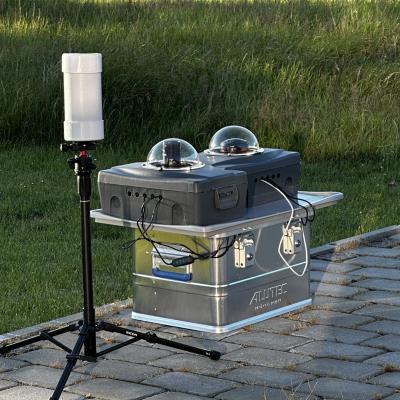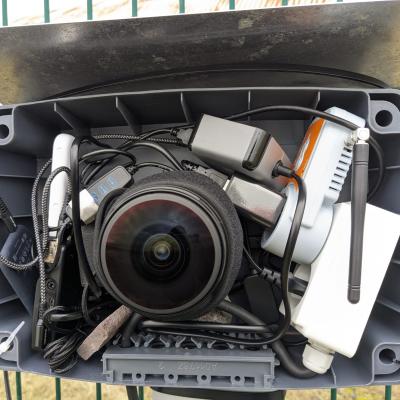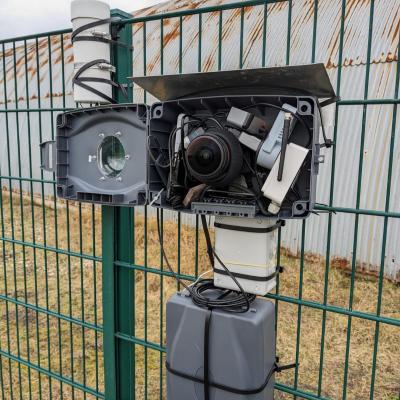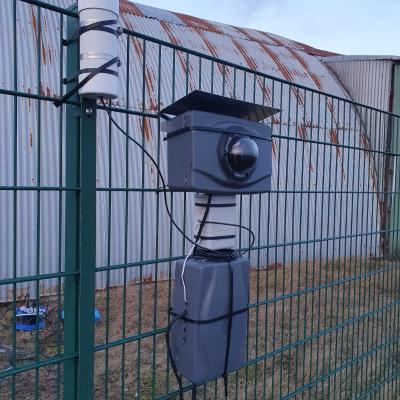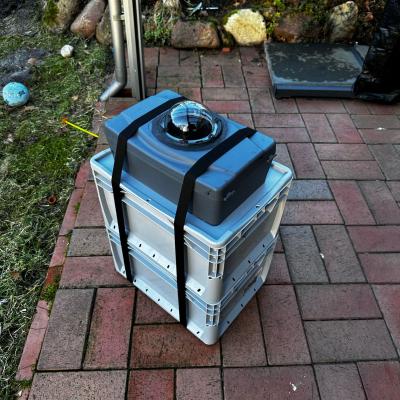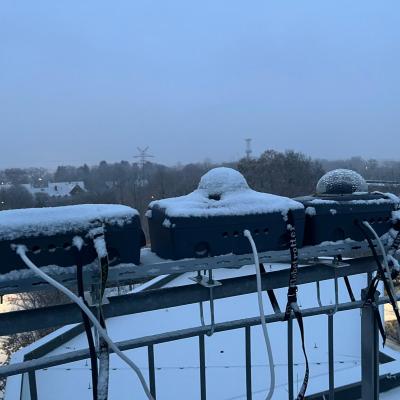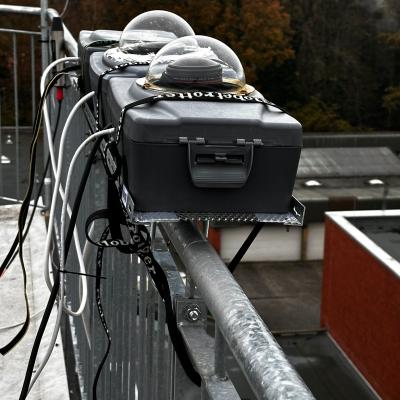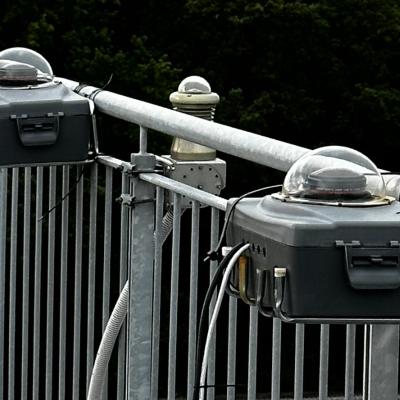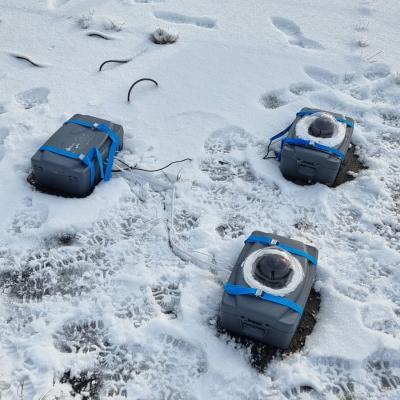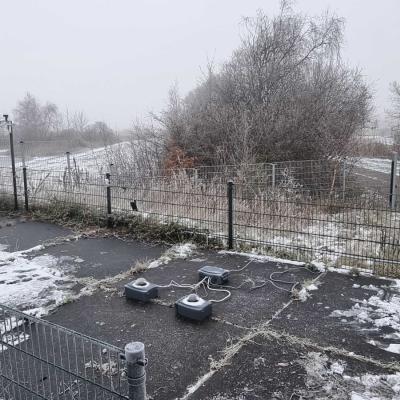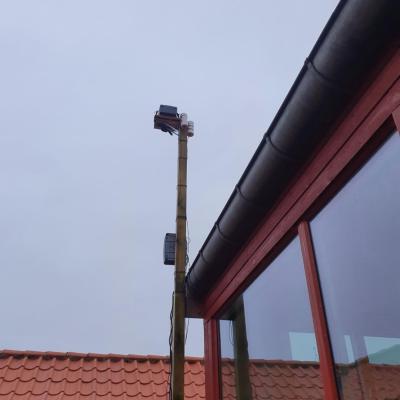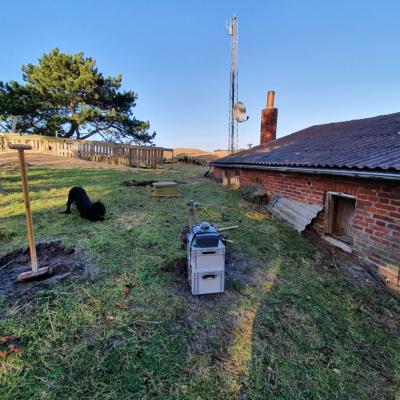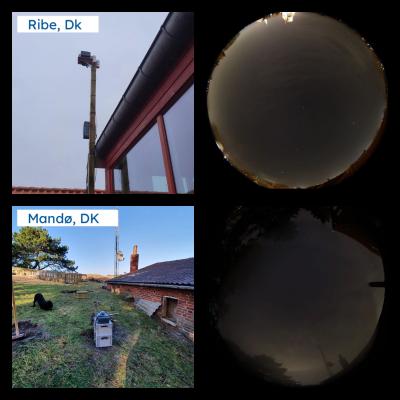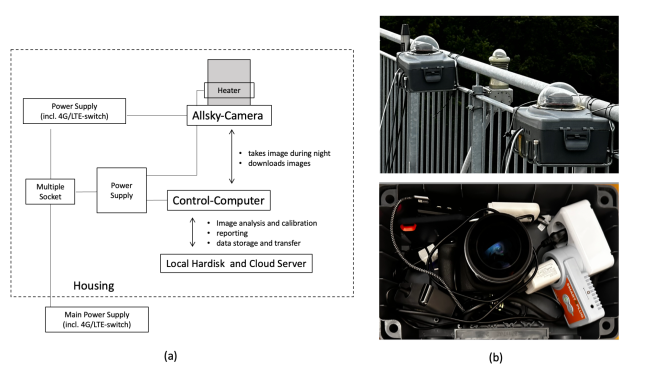
Setup of a camera based system jn a water-resistant housing
Instruments
In the project, multiple different instruments will be placed next to one another to evaluate their performance under different skies. All detectors are placed in water-resistant housings, so that long-term measurements are possible. The sky brightness is determined in a 20° circular field-of-view in the Zenith. To account for spectral differences the cameras are cross calibrated against one reference detector (in our case the Sky-Quality Camera).
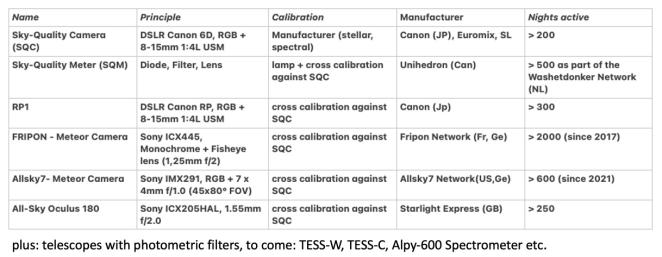
The table on the right shows the different systems running at the moment at different pilot sites under the framework of KID. Additional systems like TESS-W or TESS-C are prepared for installation at the moment.
An important instrument of the network is a weatherproof, mobile, adaptive station in which various camera systems can be integrated. This consists of an IP54 weatherproof housing with interchangeable acrylic domes as windows for the cameras. Camera control is made possible by means of a Raspberry Pi. The systems send measurement data either via LAN or the cell phone network. In the latter case, the raw data are stored on an internal hard disk with space for approximately 1 year of data. The stations can be controlled via independent sockets using the mobile phone network, so that system crashes can usually be restarted remotely.
Contact:
For more information on the system, please feel free to contact the University Observatory Oldenburg or any member of the KID-Team:
sternwarte@lists.uni-oldenburg.de
Typical data acquired with the KID-RP-System
Under the CC license CC BY we provide access to many of the data collected by KID. In the repository you will find raw images and analysed fils of the zenith brightness at different KID locations.
Camera based data can be accessed here https://cloud.uol.de/s/2pR856PQ9eNAHaj
SQM data measurements can be found under www.washetdonker.nl
Manuals and Trainings
Workshop: DSLR Data Access
Workshop: SQM Data Access

